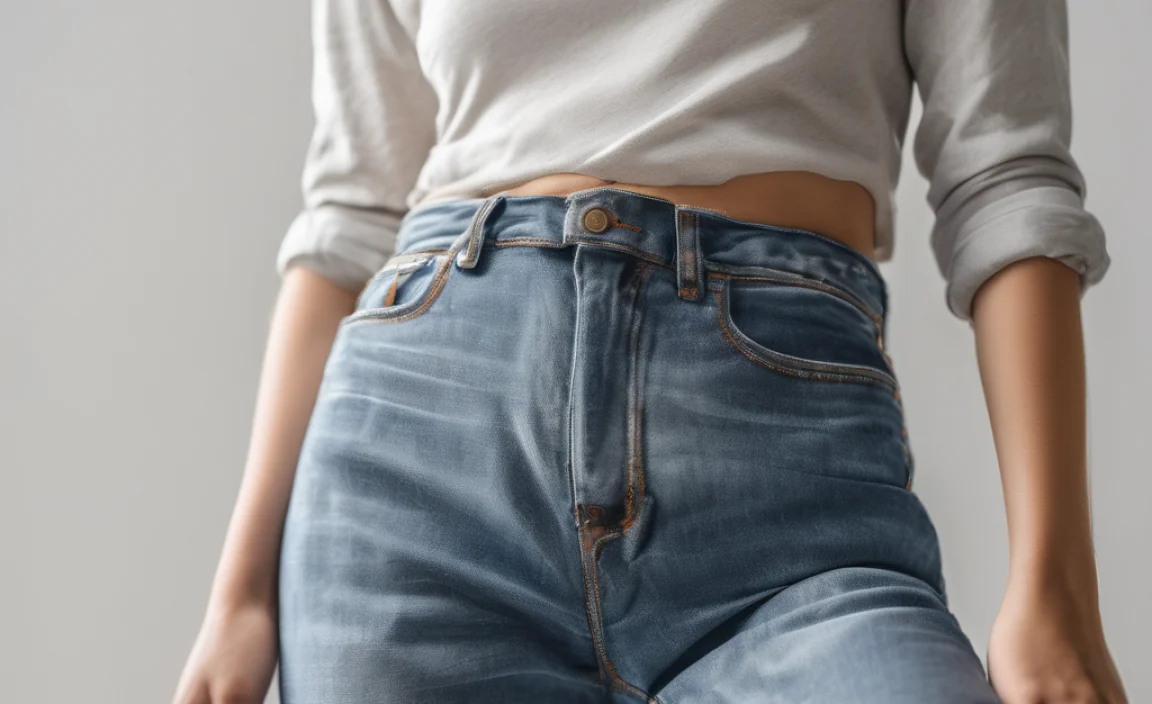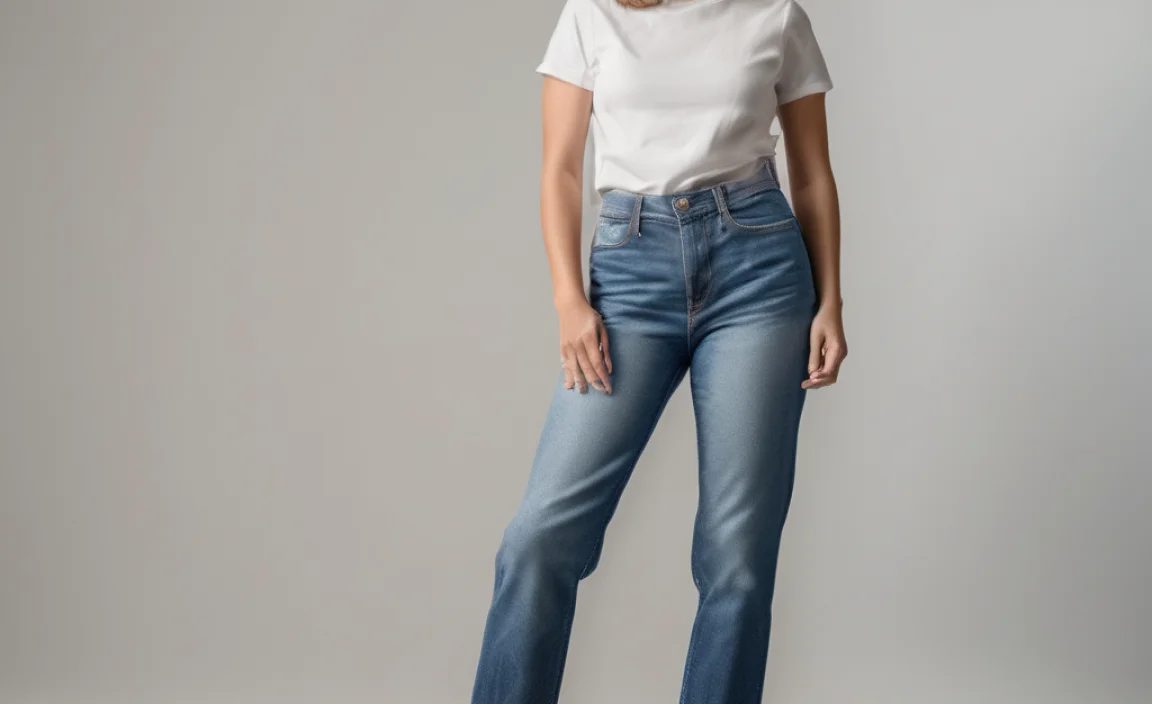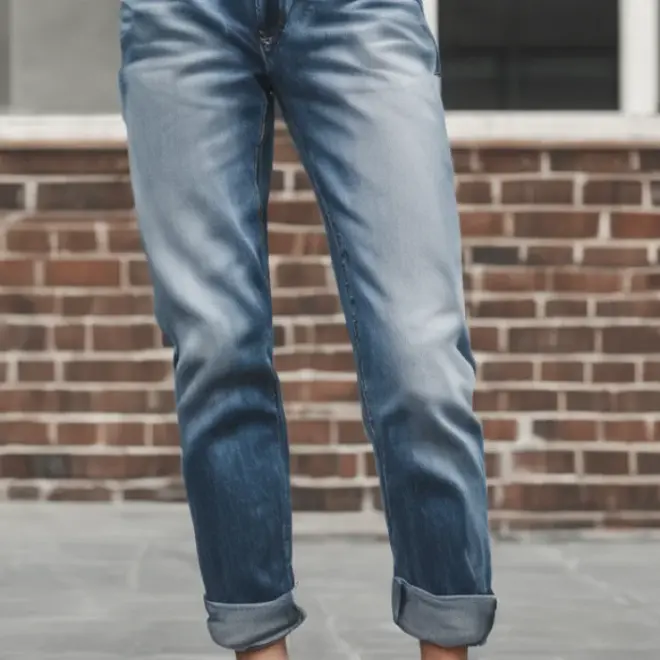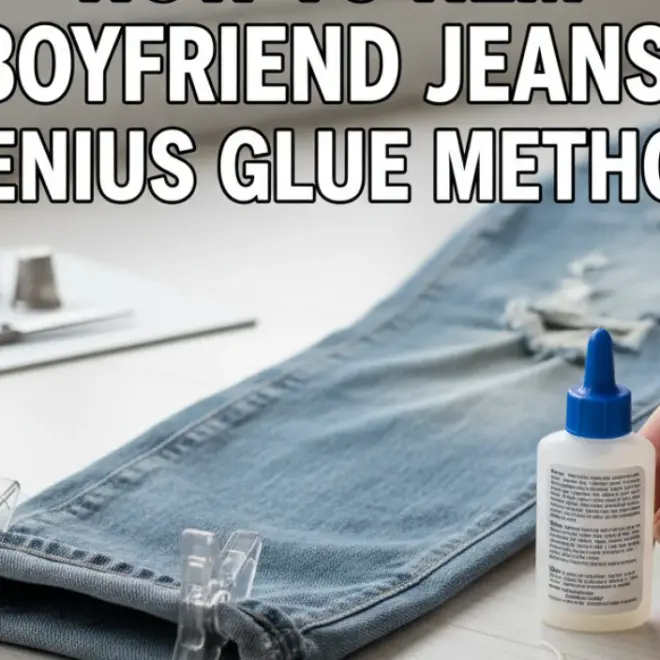Quick Summary:
Learn how to hem mom jeans effortlessly with a sewing machine. This guide provides clear, simple steps to achieve a professional finish at home, giving your favorite jeans a perfect fit and a fresh new look without special skills.
How To Hem Mom Jeans: Proven & Effortless Steps for a Perfect Fit
Mom jeans are a wardrobe staple, but their often-overlong length can be a style challenge. Finding the perfect cropped or ankle-grazing hem shouldn’t require a trip to the tailor. Many people find themselves frustrated with jeans that drag on the floor or look a bit sloppy. But don’t worry! With a few simple tools and this easy-to-follow guide, you can achieve a clean, professional-looking hem on your mom jeans right at home. We’ll walk you through every step, making it straightforward even if you’re new to sewing.
Why Hemming Your Mom Jeans is a Game-Changer

Getting the length of your mom jeans just right can transform your entire outfit. The right hemline can make legs look longer, shoes more prominent, and your overall silhouette sharper. Beyond aesthetics, a proper hem prevents fraying and wear on the bottom edge of your jeans, extending their lifespan. It’s a practical skill that unlocks the full potential of your denim collection.
Tools You’ll Need for Hemming

Gathering the right supplies makes any DIY project smoother. Here’s what you’ll need:
- Your Mom Jeans: Of course!
- Sewing Machine: A basic model is perfectly fine. Ensure it’s in good working order. You can find helpful guides on basic sewing machine maintenance from resources like the Federal Trade Commission.
- Thread: Matching or contrasting thread to your jeans.
- Sharp Fabric Scissors: For a clean cut.
- Measuring Tape or Ruler: For accurate measurements.
- Fabric Marker or Chalk: To mark your cut line and fold.
- Pins: To hold the fabric in place while sewing.
- Iron and Ironing Board: For pressing seams and folds.
- Seam Ripper (Optional but Recommended): To undo any existing hem for a cleaner start.
- Cutting Mat (Optional): To protect your surfaces when cutting.
Understanding Your Mom Jean’s Original Hem

Mom jeans often come with a stylish, slightly distressed, or “let-down” hem. Before you cut, decide if you want to replicate this look or create a neat, sewn hem. For this guide, we’ll focus on creating a clean, sewn hem, as it’s the most versatile and offers a polished finish.
If your jeans have a very wide, factory-made hem, you might be able to undo it carefully with a seam ripper to gain extra length before re-hemming. However, most mom jeans have a finished ankle that we’ll look to create anew.
Step-by-Step Guide: How to Hem Mom Jeans With Ease

Follow these simple steps to achieve a perfect hem. Take your time, and remember that practice makes perfect!
Step 1: Try On and Mark the Desired Length
This is the most crucial step for a perfect fit. Wear the shoes you’ll most commonly wear with your mom jeans. Stand in front of a mirror.
- Determine Your Ideal Length: Decide if you want your jeans to hit at the ankle, just above, or slightly cropped.
- Mark the Hemline: Using your fabric marker or chalk, carefully mark where you want the bottom of the hem to fall. You can put a small dot on the outer seam, inner seam, and center of the leg.
- Consider Stretch: Denim can stretch slightly, especially when you’re wearing it. Aiming for the hem to sit right where you want it while wearing the jeans is key.
Step 2: Remove Existing Hem (If Necessary)
If your mom jeans already have a finished hem that you want to remove to start fresh or to gain a little extra length, use a sharp seam ripper. Carefully undo the stitches holding the old hem in place. Once undone, press the hem flat with an iron to create a clean edge.
Step 3: Measure and Cut the Excess Fabric
Now it’s time to create the new hem allowance. This is the fabric that will be folded up.
- Measure Down: From your marked hemline, measure UP 1.5 to 2 inches. This is your cutting line. A 1.5-inch allowance is standard for a neat hem, while 2 inches gives you a bit more room to work with and allows for a slightly deeper fold.
- Mark the Cutting Line: Use your ruler and fabric marker to draw a straight line all the way around the leg at this measured distance. Ensure it’s parallel to your original marked hemline.
- Cut Accurately: Using your sharp fabric scissors, carefully cut along the marked cutting line. It’s best to cut one leg at a time to ensure symmetry.
Tip: To ensure both legs are exactly the same length, you can fold the jeans in half lengthwise (matching the inseam and outseam) and make sure your marks align before cutting. Some find it helpful to use a large T-square ruler for perfectly perpendicular lines.
Step 4: Prepare the New Hem
We will create a double-fold hem for a clean, professional finish that won’t fray. This method hides the raw edge inside the fold.
- First Fold: Fold the cut edge of the fabric UP by about 0.5 inches towards the inside of the leg. Press this fold firmly with your iron. This encloses the raw edge.
- Second Fold: Now, fold the fabric UP again. This second fold should be the width of your remaining hem allowance (e.g., if you allowed 1.5 inches and folded up 0.5 inches, your second fold will be 1 inch). Press this second fold very firmly. You should now have a clean, double-folded hem ready for sewing.
Important: Ensure the folded hem lies flat and is smooth all the way around the leg. Pins will help keep it in place.
Step 5: Pin the Hem in Place
Use pins to secure the double-folded hem. Place pins perpendicular to the folded edge.
- Spacing: Place pins every 1-2 inches along the hem.
- Alignment: Ensure the folded edge sits smoothly against the leg of the jean and that the top edge of the fold is straight.
- Check Seams: Make sure the side seams and inseam align correctly at the hemline. The goal is to have the new hemline be perfectly straight and even all the way around the leg.
Step 6: Sew the Hem
Now it’s time to use your sewing machine. Make sure you have a sturdy needle suitable for denim, often a size 100/16 or 110/18. Use a strong thread, like a polyester or heavy-duty cotton.
- Setup: Thread your sewing machine with matching or contrasting thread. Set your stitch length to a medium setting (around 2.5-3.0).
- Navigate the Machine: Carefully place the pinned hem under the presser foot. Position the needle so it will sew right along the top folded edge of the hem – this is called the “stitch line.” For a cleaner look, aim to sew about 1/8 inch from the folded edge.
- Start Sewing: Lower the presser foot and begin sewing. Sew slowly and steadily, removing pins as you reach them. Backstitch at the beginning and end to secure the stitches.
- Sewing the Circuference: Continue sewing all the way around the leg of the jeans. You may need to pivot the garment at the side seams to keep your stitching line straight.
- Finishing: Once you’ve sewn all the way around, backstitch again to secure the end.
Pro Tip: If your jeans have a thick side seam, you might need to lift the presser foot slightly and use a “hump jumper” or place a folded piece of fabric behind the presser foot to help it rise over the thicker part, ensuring consistent stitch length.
Step 7: Final Touches
Once you’ve finished sewing, remove any remaining pins and loose threads.
- Press Again: Give the hem a final press with your iron. This sharpens the crease and makes the hem look even more professional.
- Trim Threads: Trim any loose threads neatly.
Your mom jeans are now perfectly hemmed and ready to wear!
Choosing the Right Hem Type for Mom Jeans

While we focused on a double-folded hem, other options exist depending on the look you’re after.
| Hem Type | Description | Pros | Cons | Best For |
|---|---|---|---|---|
| Double-Folded Hem | Raw edge folded up twice and sewn. | Neat, professional finish, durable, prevents fraying. | Adds a bit of bulk, might alter the original drape slightly. | Most mom jeans, a clean and polished look. |
| Single Fold Hem | Raw edge folded up once and sewn. | Quicker to sew, less bulky. | Raw edge may fray over time if not secured well, less finished appearance. | Casual styles, very thick fabrics where double fold is too bulky. |
| Rolled Hem | Fabric is carefully rolled into a narrow hem and stitched. | Very clean, minimal bulk, can look delicate and stylish. | More time-consuming, requires practice to get even. | Lighter weight denim, cropped styles, delicate garments. |
| Raw Hem (Finished Edge) | Fabric is cut and then a zigzag stitch is applied very close to the cut edge to prevent excessive fraying. | Trendy, casual, easy to achieve. | Can fray further over time, may not be suitable for all occasions. | Fashion-forward, distressed looks, everyday casual wear. |
Troubleshooting Common Hemming Issues
Even with the best intentions, you might encounter a hiccup. Here are solutions to common problems:
- Uneven Hem: If your hem is wobbly, the initial marking or cutting might have been a bit off. For a quick fix, you can sometimes trim the uneven parts to match your shortest point and then re-establish your hem allowance. Ensure your fabric is flat and smooth when marking and cutting next time.
- Skipped Stitches: This usually means your sewing machine needle is dull, the wrong type, or not inserted correctly. Try a fresh, sharp denim needle. Ensure the presser foot is firmly down.
- Stitches Puckering: This can happen if your tension is too tight or your stitch length is too short. Check your machine’s upper and lower thread tension settings and consider slightly increasing your stitch length. Pressing the hem after sewing can also help relax puckered stitches.
- Sewing Machine Jamming: Always ensure your bobbin is wound correctly and inserted properly, and that the upper thread is seated in the tension discs. Clear any lint or tangled threads from the bobbin area.
Maintaining Your Hemmed Mom Jeans
Once your mom jeans are perfectly hemmed, treat them well to ensure they last:
- Washing: Wash your jeans in cold water on a gentle cycle. Consider washing them inside out to protect the fabric and any decorative stitching.
- Drying: Air drying is the best option for denim. Tumble drying on low heat can be used sparingly, but prolonged high heat can shrink or damage the fibers and the hem.
- Ironing: If needed, iron your jeans inside out on a medium heat setting.
Proper care will keep your hem looking crisp and your jeans in great shape.
Frequently Asked Questions About Hemming Mom Jeans
Q1: Do I need a special sewing machine for hemming jeans?
A: No, a standard home sewing machine is usually sufficient for hemming mom jeans. Ensure it has a strong motor and can handle denim fabric. Using a denim needle is recommended.
Q2: How much fabric should I leave for the hem?
A: For a neat, durable double-folded hem, leaving 1.5 to 2 inches of fabric allowance is ideal. This gives you enough room to create a clean fold that hides the raw edge.
Q3: What if my mom jeans have a lot of stretch?
A: If your jeans have a significant amount of stretch, be extra careful when measuring. Try them on with your shoes and mark the length while the fabric is relaxed and under slight tension from being worn. Sewing with a ballpoint or stretch needle might also be beneficial.
Q4: Can I hem mom jeans without a sewing machine?
A: Yes, you can hem jeans by hand, though it’s more time-consuming and may not be as durable. You can use a sturdy hand stitch like a backstitch or a whipstitch to secure the hem. Ironing is still essential for a neat finish.
Q5: How do I get a “distressed” or raw hem look?
A: To achieve a raw hem, cut your jeans to the desired length, then fold up a small amount (about 0.5 inches) and create a single fold hem, sewing close to the raw edge. After washing and wearing, the edges will naturally fray. You can also gently pull at the threads to encourage fraying.
Q6: Should I use matching or contrasting thread?
A: Matching thread will give your hem a seamless, professional look. Contrasting thread can be a subtle style choice, adding a decorative element to the hemline, but use this option intentionally.
Conclusion
Hemming your mom jeans is far less daunting than it might seem. By following these straightforward steps, you can confidently alter the length of your favorite denim to achieve a perfect fit that flatters your style. Whether you prefer a crisp, clean finish or are experimenting with custom looks, this guide provides the practical knowledge you need. So, grab your sewing machine, your favorite pair of mom jeans, and get ready to enjoy a custom fit that feels like it was made just for you. Happy hemming!











